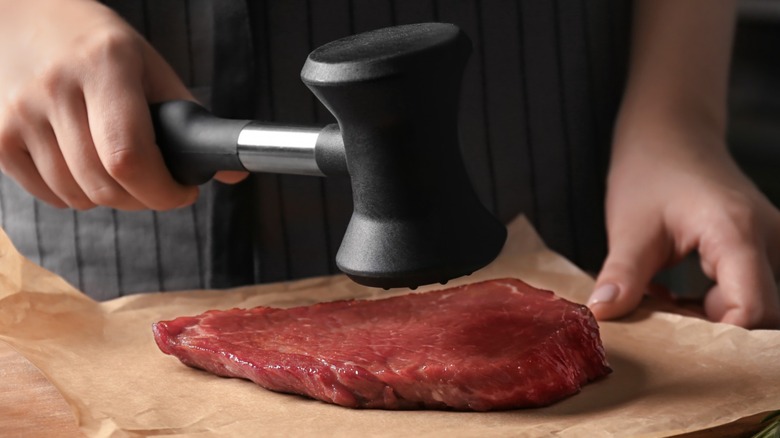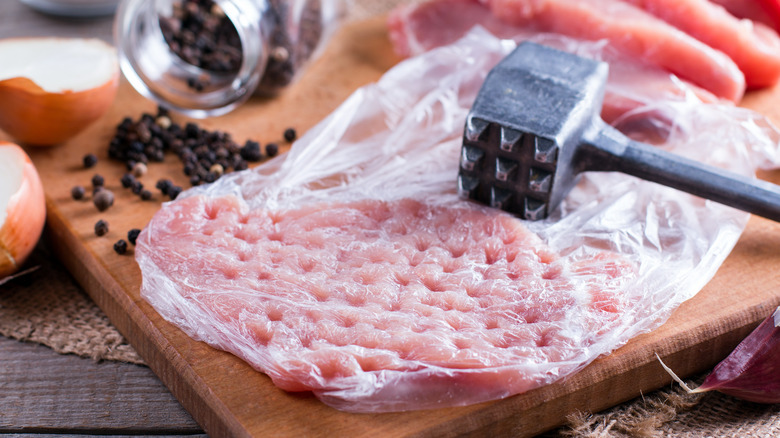The Benefit Of Tenderizing Steak Before You Marinate Or Season
For those of us who eat it, meat can either be the star of our meal or the biggest disappointment. Have you ever been looking forward to a nice juicy burger, salivating at the thought of sizzling fat and tender protein only for you to take a bite and find it completely and utterly bland? We can glorify meat all we want, but without the help of seasonings, butter, dry rubs, and marinades, we might all just go vegetarian.
Steak in particular can either be one of the best, most succulent, flavorful, and satisfying meals you can cut into, but if prepared improperly, it can turn out dry and tough like stiff leather. Properly cooking steak is treated as an art form, and rightly so. Marinating methods and secret family spice mixtures have been passed down from generation to generation. Plastic bags are now filled with garlic, wine, and other ingredients to help flavors seep into the steak while also keeping it sanitary (via Better Homes & Gardens). Unfortunately, though most kitchen dwellers have learned by now how to properly flavor their foods, many people are still skipping over the all-important step that comes before marinating: tenderizing.
The importance of tenderizing
If you really want the effort you put into preparing your steak marinade to make a difference, you have to tenderize your steak first. Steak marinades are meant to help break down some of the toughest fibers in meat as well as add some incredible flavor, but if your cut is particularly lean, you'll need to do a bit of pounding (via My Chicago Steak).
So, what cuts of steak should you be tenderizing? Many steaks don't need the extra help, but Thrillist claims that shanks, rounds, shoulders, brisket, and anything from the neck or heel of the round are going to be considerably tough. MasterClass suggests that the flavors and juices of the steaks are better maintained through tenderizing and that the small divots the mallets typically produce open up the connective tissue allowing for better absorption and texture. That's why Food Network recommends owning a meat mallet that has a spiked side (with small sharp points) and a flat side. To cut down on the mess, sandwich the steak between plastic wrap or wax paper and use the spiked side to break up the connective tissue, and then use the flat end to even out the steak for an even cook.

